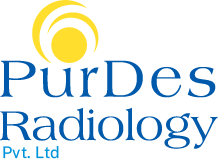MRI Brain (Plain)
MRI Brain (Plain)
MRI Brain (Plain)
Technique: Multi-echo, multi-planar MRI of brain is performed.
Clinical Details:
Findings:
Advice: Kindly correlate with clinical findings & relevant investigations.
Clinical Details:
Findings:
- Cerebral parenchyma shows normal grey and white matter signals. Myelination appears normal.
- No hypo/hyperintense lesion seen. No restriction on diffusion scan.
- No intracerebral hemorrhage/acute infarct seen in the present scan.
- Bilateral capsuloganglionic regions are normal.
- Corpus callosum and other white matter tracts show normal signals and morphologies.
- Ventricles, aqueduct, sulci, fissures and basal cisterns appear unremarkable.
- Pituitary, pineal gland and other midline structures appear unremarkable.
- Cerebellum, midbrain, pons, medulla &VIIth-VIIIth nerve complex appear unremarkable.
- Visualized parts of orbits, PNS do not show any significant abnormality.
- Cranio-vertebral junction (CVJ) appears unremarkable. No listhesis.
Advice: Kindly correlate with clinical findings & relevant investigations.
